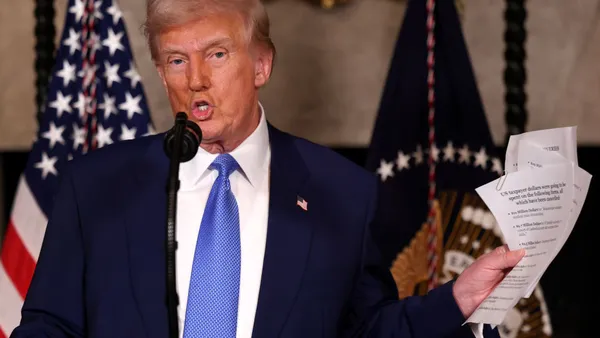The Securities and Exchange Commission earlier this year fined the CEO and president of Cheetah Mobile for insider trading even though they had each executed a 10b5-1 plan.
The plan gives executives and officers an affirmative defense for making an advantageous trade, but as a result of its investigation, the SEC concluded the executives had timed their trades knowing bad news was about to drop: their biggest advertiser was pulling back in its spend with the company. The two were fined $556,580 and $200,254, respectively.
"While trading pursuant to 10b5-1 plans can shield employees from insider trading liability under certain circumstances, these executives’ plan did not comply with the securities laws because they were in possession of material nonpublic information when they entered into it,” Joseph Sansone, an SEC enforcement officer, said at the time.
Easier road
With changes to its rules governing 10b5-1 plans finalized December 14, that kind of enforcement action will get easier for the SEC by putting executives and officers in a much tighter box in terms of when and how often they can trade their shares.
It also makes them certify they’re not acting on non-public information and beefs up disclosure requirements.
“If insiders don’t act in good faith when using such plans, the plans will not offer them an affirmative defense,” SEC Chair Gary Gensler said earlier this year when agency staff were working on the changes.
Critics have long had a problem with 10b5-1 plans because they’re open to manipulation to hide insider trading.
“A subset of executives use these plans to engage in opportunistic, large-scale selling,” Stanford University researchers said in a report they released last year.
In his comments earlier this year, Gensler cited research showing 14% of sales in stock involving 10b5-1 plans occur within 30 days of plan adoption. That suggests executives are creating or modifying the plans with an eye on upcoming good or bad news the public doesn’t yet know about.
Trading restrictions
To make it harder for executives to create a plan and then quickly trade stocks under its protections, the December 14 rule imposes a 90-day cooling-off period between when a plan is created or modified and when executives or officers can trade. Lower-level employees, who are less likely to have insider knowledge of big changes coming, have a 30-day cooling-off period.
Depending on when the company submits its quarterly or other financial report to the SEC and the 10b5-1 plan is disclosed in there, the cooling-off period could be different.
The rule doesn’t make trading outside the window illegal; it just takes away the affirmative defense the 10b5-1 plan provides.
The rule also prohibits executives and officers from defending their trades on the basis of multiple overlapping 10b5-1 plans and they can only trade under a single plan once a year. Insiders also have to certify they’re not making the trade on the basis of non-public information.
There are quarterly and annual disclosure requirements as well, along with descriptions of what those must include.
“We’ve heard from courts, commenters, and members of Congress that insiders have sought to benefit from the rule’s liability protections,” Gensler said in announcing the changes. “I believe today’s amendments will help fill those potential gaps.”











